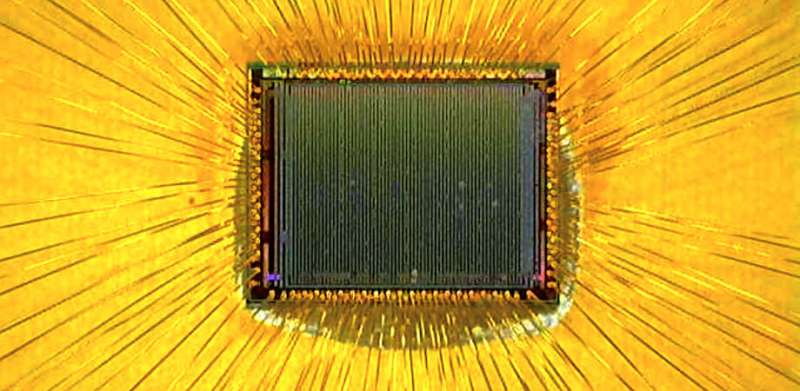
Monitoring the flow of blood to the brain can reveal much about how it works. An increase in blood flow usually accompanies neuronal activity, whereas a decrease in the flow can be indicative of various abnormalities, e.g., as a risk indicator leading to stroke. Modern optical technologies such as diffuse correlation spectroscopy (DCS) enable scientists to measure blood flow to the brain noninvasively by shining a laser on scalp and analyzing the diffused light.
Specifically, DCS-based instruments work by calculating statistical parameters of the diffused light, which forms a speckle pattern—a random pattern of bright and dark spots formed upon scattering of laser light by a rough surface. Since blood flow affects this pattern in a statistically predictable way, DCS can be used as an indirect measurement technique.
Moreover, the recent rise of single-photon avalanche diode (SPAD) cameras has made it possible to capture many independent speckles at the same time, as opposed to capturing only a single speckle mode in traditional DCS instruments. This development promises multispeckle DCS instruments with much higher sensitivity.
However, handling the extremely high data rates of modern SPAD cameras, which exceed the maximum data transfer rates of commonly used communication protocols, is quite challenging. This bottleneck has limited the scalability of SPAD cameras to higher pixel resolutions, hindering the development of better multispeckle DCS techniques.
To tackle this issue, a team of scientists led by Professor Robert K. Henderson of the University of Edinburgh has recently presented a novel data compression scheme in which most calculations involving SPAD data are performed directly on a commercial programmable circuit called a field-programmable gate array (FPGA). Their work is sponsored by Meta Platforms Inc., and is published in the Journal of Biomedical Optics.
The researchers connected a SPAD sensor array, composed of 192 by 128 pixels and packaged into a camera module called Quanticam, to an FPGA, upon which they implemented an autocorrelation algorithm. It calculated 12,288 autocorrelations—one of the most time-consuming computations involved in multispeckle DCS—in real time, from the SPAD array output. In this way, the team managed to shift the computational burden from the host computing system to the hardware directly connected to the SPAD sensors.
This alleviated the need for high computational power and extremely fast data transfer rates between the multispeckle DSC system and the host system upon which the data is visualized.
Thanks to this innovative data compression scheme, the team could successfully utilize a large number of pixels in the SPAD array for developing multispeckle DSC technique with improved sensitivity and usability.
Discussing their achievement, Henderson remarked, “Our proposed system achieved a significant gain in the signal-to-noise ratio, which is 110 times higher than that possible on a single-speckle DSC implementation and 3 times higher than other state-of-the-art multispeckle DSC systems.”
In the future, the proposed FPGA-based design will help researchers adopt SPAD arrays with high pixel resolution without the need for powerful computers, hence democratizing the use of SPAD cameras in the biomedical research community. This may hopefully expand the horizons of multispeckle DCS to more areas of biomedical research.
More information:
Francescopaolo Mattioli Della Rocca et al, Field programmable gate array compression for large array multispeckle diffuse correlation spectroscopy, Journal of Biomedical Optics (2023). DOI: 10.1117/1.JBO.28.5.057001
Journal information:
Journal of Biomedical Optics
Source: Read Full Article